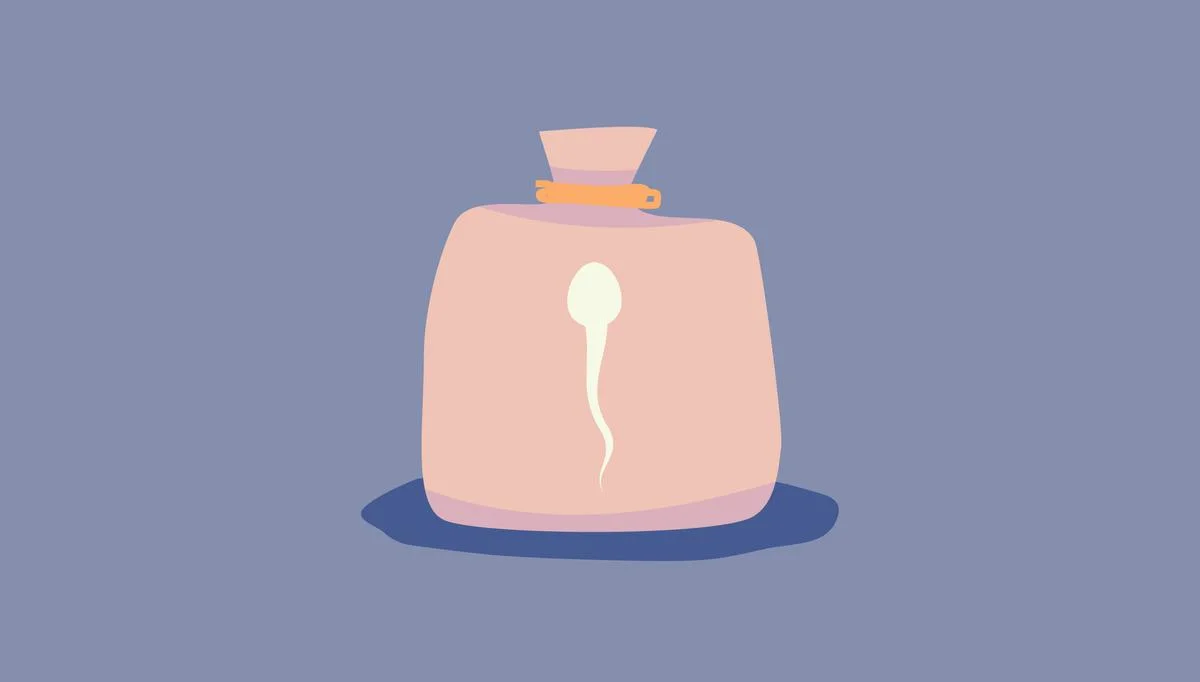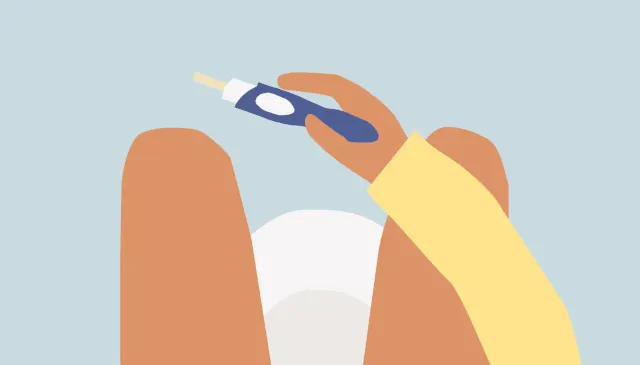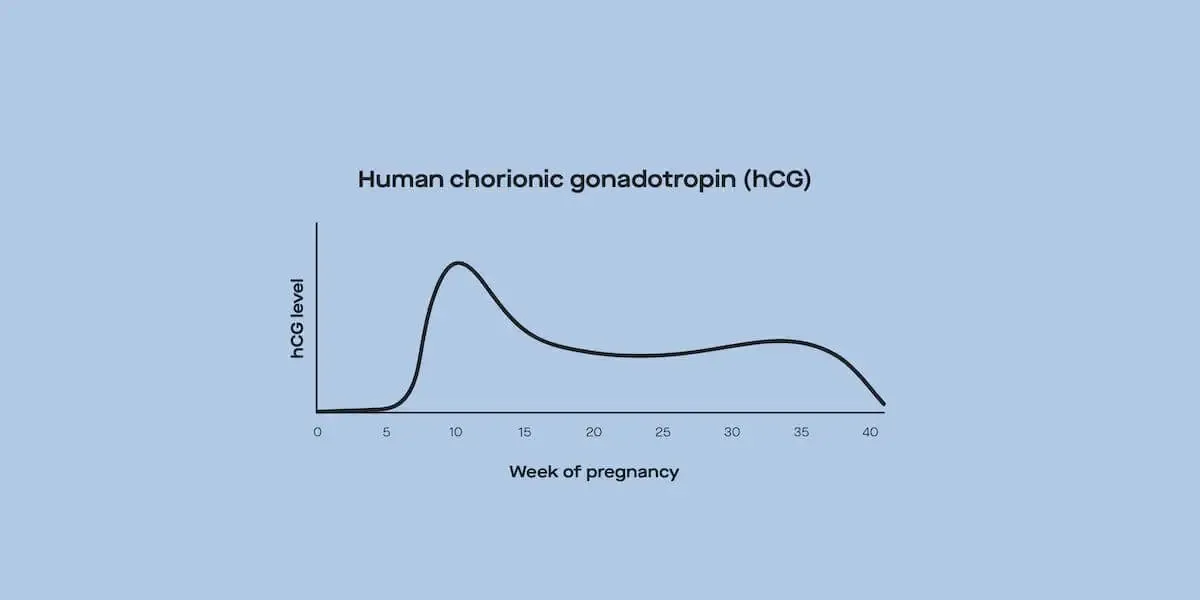Here's what we'll cover
Here's what we'll cover
Most people have two eyes, two ears, two legs, and two arms—but two uteruses? If you have uterus didelphys, you know that can happen, but most people haven’t heard of this condition.
If you were born with two uteruses, you likely have some concerns about how that might impact your ability to start a family. Some people first seek treatment because they’re struggling to have sex—which can be frustrating for both you and your partner. Fortunately, treatment is available that can help make sex easier (and more enjoyable!), and your healthcare provider can help you have a healthy pregnancy.
Here’s what you should know about uterus didelphys and its impact on your reproductive and sexual health.
What is uterus didelphys?
Uterus didelphys (also called double uterus) is a rare congenital uterine anomaly, meaning your uterus didn’t properly develop before you were born. Finding out you have this condition can come as a shock, but if you have it, it’s something you’ve had your whole life, and there was nothing you could have done to prevent it (Rezai, 2015).
The uterus (also called the womb) is part of your reproductive system. It is a hollow, pear-shaped organ where an unborn baby develops and grows. People with uterus didelphys have two separate uteruses, each with its own cervix (the lower portion of the uterus that connects to the vagina) (Rezai, 2015). Some people with this condition also have what’s called a longitudinal vaginal septum—a vertical wall of tissue that divides the vagina into two sections with two openings. This is sometimes called a double vagina (Behr, 2012).
Uterus didelphys is a rare condition affecting 0.03–0.1% of the population. That’s about 3–10 out of every 10,000 women. Uterus didelphys is less common than other uterine malformations, such as a bicornuate uterus or septate uterus (Bhagavath, 2017).
What are the signs and symptoms of uterus didelphys?
Most people with a didelphys uterus don’t experience any symptoms. However, if you also have a vaginal septum, you might experience pain during sex (called dyspareunia) or painful periods (dysmenorrhea) (Rezai, 2015).
Vaginal septums can be thin and flexible or thick and rigid. Occasionally a vaginal septum may block off one side of the vagina (a situation called hemivagina). In this case, menstrual blood can build up in the vagina (called hematocolpos) and result in chronic abdominal pain (Rezai, 2015).
You may have trouble using tampons or having sex if you have this condition since a vaginal septum can cause either side of the vagina to be narrow. Some people first notice something is wrong when they continue to bleed despite using a tampon since blood can leak from the other side of the vagina (Perez-Milicua, 2016).
Impact on sex
Having a didelphys uterus does not always impact your sex life. If you don’t have a vaginal septum, you likely won’t have any symptoms that interfere with sex (Rezai, 2015).
If you have a vaginal septum, symptoms can vary depending on how thick or elastic it is. Some case reports have described situations where both the patient and their partner were unaware of the vaginal division, reporting no interference with sex. Others experience pain that may make sex impossible. Fortunately, surgical procedures are available to remove the septum, allowing you to have a more enjoyable sex life (Rezai, 2015).
Impact on fertility and pregnancy
Finding out you have a didelphys uterus likely has left you with many questions regarding your reproductive health. While challenges are common, many women can have successful pregnancies.
Having a didelphys uterus typically does not affect your ability to become pregnant, but it can cause some complications. Women with this condition are at an increased risk of miscarriages and preterm labor (going into labor before 37 weeks of pregnancy), which occur about 30% of the time (Bhagavath, 2017). Your healthcare provider will monitor you and give you all the support you need to try to avoid these complications.
Babies born to women with uterus didelphys are more likely to be in the breech position (feet first instead of head first) or another position not ideal for vaginal delivery. For this reason, cesarean sections (c-sections) are necessary in approximately 80% of cases. A didelphys uterus can also potentially restrict how well the baby grows, and babies are more likely to be born at a low birth weight (Slavchev, 2020).
What about twins? Having a condition that involves two uteruses undoubtedly begs the question: are you more likely to end up with a baby in each womb? Probably not. Conceiving a baby in each uterus is extremely rare—occurring in only one out of one million cases (King, 2020).
Causes of uterus didelphys
If you have this condition, it’s something that happened when you were in your mother’s womb. When female babies develop in the womb, two separate tubes (called müllerian ducts) fuse to form the uterus. Any disruption in this process can lead to abnormalities in the reproductive system called müllerian duct anomalies (Bhagavath, 2017).
Uterus didelphys (one type of müllerian duct anomaly) occurs when the tubes remain completely separate and don’t fuse at all. This results in two separate uteruses. Researchers don’t know for sure why this happens (Bhagavath, 2017).
Diagnosis of uterus didelphys
During a routine pelvic exam, your healthcare provider may discover abnormalities such as a double vagina or two cervices. Additional testing will be needed to make an accurate diagnosis and may include:
Ultrasonography: An ultrasound is typically the first imaging test healthcare providers use to look at the uterus, but it may not be able to tell the difference between certain conditions. If available, a 3D ultrasound can provide more detailed information (Rezai, 2015).
Hysterosalpingography (HSG): During a hysterosalpingogram, your provider or a technician will inject a fluid containing a dye into the uterus. X-ray images are then taken that show the inside shape of the uterus and fallopian tubes. This can be very helpful, but because this test does not provide much information about the outer shape of the uterus, additional tests will likely be required (Behr, 2012).
Sonohysterogram: For this procedure, the uterus is filled with fluid. An ultrasound is then performed to evaluate the uterine structure. This test can provide better images than a regular ultrasound (Khafaga, 2019).
Magnetic resonance imaging (MRI): MRI is considered the most accurate diagnostic test for uterine anomalies. It can provide detail about the inner and outer shape of the uterus and can help differentiate between different types of anomalies (Behr, 2012).
Your healthcare provider will likely use an ultrasound or MRI to look at your kidneys as well, since about 30% of people with uterus didelphys also have abnormalities with their kidneys (Behr, 2012).
Treatment of uterus didelphys
If you become pregnant, your healthcare provider will closely monitor your pregnancy with additional scans and tests to give you the best chance at a healthy pregnancy.
Most people with a didelphys uterus will not require surgery to correct the uterine shape. However, if you’ve experienced recurrent pregnancy loss, a procedure called Strassman metroplasty may be recommended. This procedure joins the two separate uteruses to make one single uterus (Bhagavath, 2017).
If you have a vaginal septum causing symptoms (pain during sex or painful periods), your healthcare provider may recommend a surgical procedure to remove it. Removing the septum may also be necessary to allow for vaginal childbirth, depending on the thickness of the tissue (Rezai, 2015).
When to see a healthcare provider
Contact your healthcare provider if you experience any of the following symptoms:
Chronic abdominal pain
Pain during sex
Painful periods
Repeated miscarriages
Being diagnosed with uterus didelphys can leave you feeling worried about your reproductive and sexual health, especially if you’re trying to start a family. Discuss any symptoms and concerns with your healthcare provider. Together, you will develop a treatment plan that involves close monitoring if you become pregnant, offering you the best chance for a healthy pregnancy and baby.
DISCLAIMER
If you have any medical questions or concerns, please talk to your healthcare provider. The articles on Health Guide are underpinned by peer-reviewed research and information drawn from medical societies and governmental agencies. However, they are not a substitute for professional medical advice, diagnosis, or treatment.
Behr, S. C., Courtier, J. L., & Qayyum, A. (2012). Imaging of müllerian duct anomalies. Radiographics: A Review Publication of the Radiological Society of North America, Inc , 32 (6), E233–E250. doi: 10.1148/rg.326125515. Retrieved from https://pubmed.ncbi.nlm.nih.gov/23065173/
Bhagavath, B., Ellie, G., Griffiths, K. M., Winter, T., Alur-Gupta, S., Richardson, C., & Lindheim, S. R. (2017). Uterine malformations: an update of diagnosis, management, and outcomes. Obstetrical & Gynecological Survey , 72 (6), 377–392. doi: 10.1097/OGX.0000000000000444. Retrieved from https://pubmed.ncbi.nlm.nih.gov/28661551/
Khafaga, A., & Goldstein, S. R. (2019). Abnormal uterine bleeding. Obstetrics and Gynecology Clinics of North America , 46 (4), 595–605. doi: 10.1016/j.ogc.2019.07.001. Retrieved from https://pubmed.ncbi.nlm.nih.gov/31677744/
King, A. L., Pixton, S., & Lanzarone, V. (2020). Uterine didelphys with dicavitary twin gestation: A case report. Case Reports in Women's Health , 27 , e00199. doi: 10.1016/j.crwh.2020.e00199. Retrieved from https://pubmed.ncbi.nlm.nih.gov/32322536/
Perez-Milicua, G., Hakim, J., Adeyemi, O., & Dietrich, J. E. (2016). Longitudinal vaginal septum resection using the ligasure device. Journal of Pediatric and Adolescent Gynecology , 29 (6), e95–e96. doi: 10.1016/j.jpag.2016.06.002. Retrieved from https://pubmed.ncbi.nlm.nih.gov/27321900/
Rezai, S., Bisram, P., Lora Alcantara, I., Upadhyay, R., Lara, C., & Elmadjian, M. (2015). Didelphys uterus: a case report and review of the literature. Case Reports in Obstetrics and Gynecology , 2015 , 865821. doi: 10.1155/2015/86582. Retrieved from https://pubmed.ncbi.nlm.nih.gov/26435865/
Slavchev, S., Kostov, S., & Yordanov, A. (2020). Pregnancy and childbirth in uterus didelphys: a report of three cases. Medicina (Kaunas, Lithuania) , 56 (4), 198. doi: 10.3390/medicina56040198. Retrieved from https://pubmed.ncbi.nlm.nih.gov/32340393/












